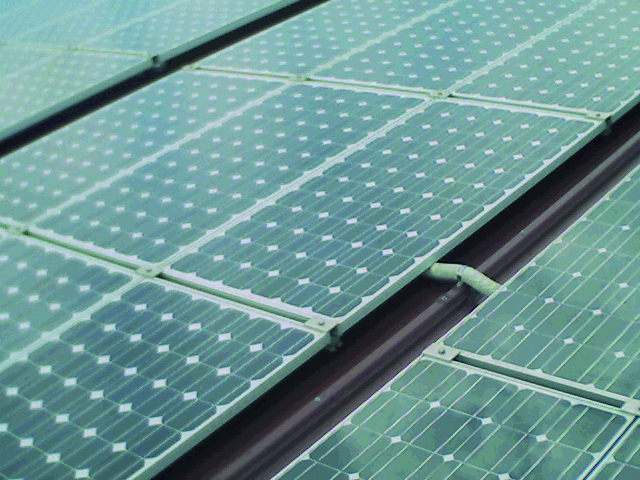How to find a quality solar module

When it comes to choosing a solar panel, electricians may base their decision on nominal efficiency factors or the price per Watt peak. These are of course two important criteria – but, from a long-term perspective, simply not enough.
After all, solar installations must last for 25 years. And they will, provided they are installed correctly and are of good quality. But how do you actually recognise good quality in a solar panel?
ADVERTISEMENT
For Conergy Australia general manager David McCallum, such panels must fulfil three criteria: they must be high-yield, solid and safe.
Efficiency delivers high-yield
The solar cells themselves are responsible for the yield factor. Innovative cell designs can deliver efficiencies of 16% to 23%, depending on material and processing effort.
The market is currently dominated by cells with two metallic collector contacts on the upper side – ‘busbars’. Some manufacturers print three busbars instead of two onto their solar panels to allow for more efficient dissipation of the generated power.
David says there are definite benefits in improved power distribution.
“Three busbars help to reduce contact resistance between the cells. The result is increased and more consistent module efficiency.”
He also believes that combined with suitable cell connectors, the use of three busbars provides more reliability in terms of power generation. David and his colleagues also favour bypass diodes when it comes to module manufacturing.
“They function like a protection switch for the cells. If, for example, foliage should shade individual cells, the bypass diodes will channel away power, thus protecting the shaded cells,” he explains.
“Once sunlight is no longer impeded, the bypass diodes switch back to their original mode, and the module will once again work at full capacity.”
High-quality components provide stability
Even the highest yield is of little use if the module doesn’t last for its projected 25-year lifespan. The production process must lead the way into the right direction.
Premium quality components, like specialist solar glass and a robust frame, provide the necessary protection for the fragile cells. But even for solar glass, the choice is endless: smooth, unstructured, micro-structured, heavily structured or even specially coated glass is on offer. Each and every glass type is designed to conduct as much sunlight as possible into the solar module.
“Heavily structured glass types tend to attract contaminants, which over time will lead to a decrease in the module’s capacity,” David explains.
“The module frame stabilises the solar module, and protects both the glass and the cells. The most robust frames are those made from anodised aluminium. They are much more scratch-resistant than coated frames.”
David also warns about possible hazards due to hollow enclosures.
“Frames should not have any hollow enclosures, as these could collect water, which can then turn to ice in the winter in Australia’s cooler climates. As a result, the frame could buckle or even burst.”
In summer, contaminants like pollen or dust will find no adhesion, which means that moss growth can be avoided. Contaminants of that type can be particularly critical, as they will permanently shade cells, which will result in a significant loss in module capacity – and in consequence in output of the entire solar installation.
Better to be safe than sorry
The safety aspect is one of the most important criteria to bear in mind when shopping around for solar modules. David therefore advises electricians to pay particularly close attention to the junction box. Faulty construction or poor workmanship can, under certain circumstances, create a fire hazard for the entire solar plant.
“I generally advise against clamp, plug or screw connections. These could easily come undone or corrode if installed improperly. The resulting arc could cause the junction box to catch fire.”
Instead, he recommends molded junction boxes made from non-flammable plastic with soldered connections. These are moisture-protected and vacuum-sealed, providing maximum safety.
Solar module manufacturers offer many safety options: warranties, certifications and positive capacity tolerances. The actual scope of services provided is determined individually by each manufacturer. A warranty period of five years for solar modules should be the absolute minimum offered.
“If the solar modules will be deployed in regions with severe weather conditions, electricians should look for additional certifications, like ammonia resistance, or for special certifications regarding corrosion-resistance if the solar modules will be installed in coastal regions.”
-
ADVERTISEMENT
-
ADVERTISEMENT

